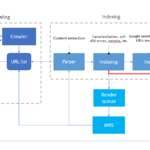Drug scheduling – a classification system used by regulatory authorities to control the availability of medicines to the public based on their safety risk and potential for abuse. Medicines and chemicals are categorized into different schedules, each with specific rules regarding their sale, purchase, storage, and disposal. The scheduling system helps ensure public health and safety by determining the level of regulatory control required for each substance. The schedules range from less tightly controlled categories to more tightly controlled categories. This classification system helps differentiate between substances that need stricter regulation and those that can be more readily available to the public.
💊 Schedule I drugs, substances or chemicals are defined as drugs with no currently accepted medical use and a high potential for abuse.
Some examples include: heroin, lysergic acid diethylamide (LSD), marijuana (cannabis), 3,4-methylenedioxymethamphetamine (ecstasy), methaqualone, and peyote.
💊Schedule II drugs, substances, or chemicals are defined as drugs with a high potential for abuse, with use potentially leading to severe psychological or physical dependence. These drugs are also considered dangerous.
Some examples include: cocaine, methamphetamine, methadone, hydromorphone (Dilaudid), meperidine (Demerol), oxycodone (OxyContin), fentanyl, Dexedrine, Adderall, and Ritalin
💊Schedule III drugs, substances, or chemicals are defined as drugs with a moderate to low potential for physical and psychological dependence. Schedule III drug abuse potential is less than Schedule I and Schedule II drugs. Some examples include: products containing less than 90 milligrams of codeine per dosage unit (Tylenol with codeine), ketamine, anabolic steroids, testosterone
💊Schedule IV drugs, substances, or chemicals are defined as drugs with a low potential for abuse and a low risk of dependence.
Some examples include: Xanax, Soma, Darvon, Darvocet, Valium, Ativan, Talwin, Ambien, Tramadol
💊Schedule V drugs, substances, or chemicals are defined as drugs with lower potential for abuse than Schedule IV and consist of preparations containing limited quantities of certain narcotics. Schedule V drugs are generally used for antidiarrheal, antitussive, and analgesic purposes.
Some examples include: cough preparations with less than 200 milligrams of codeine or per 100 milliliters (Robitussin AC), Lomotil, Motofen, Lyrica, Parepectolin
hashtagdrugcontrol hashtagregulations hashtagsafety hashtagpublichea









